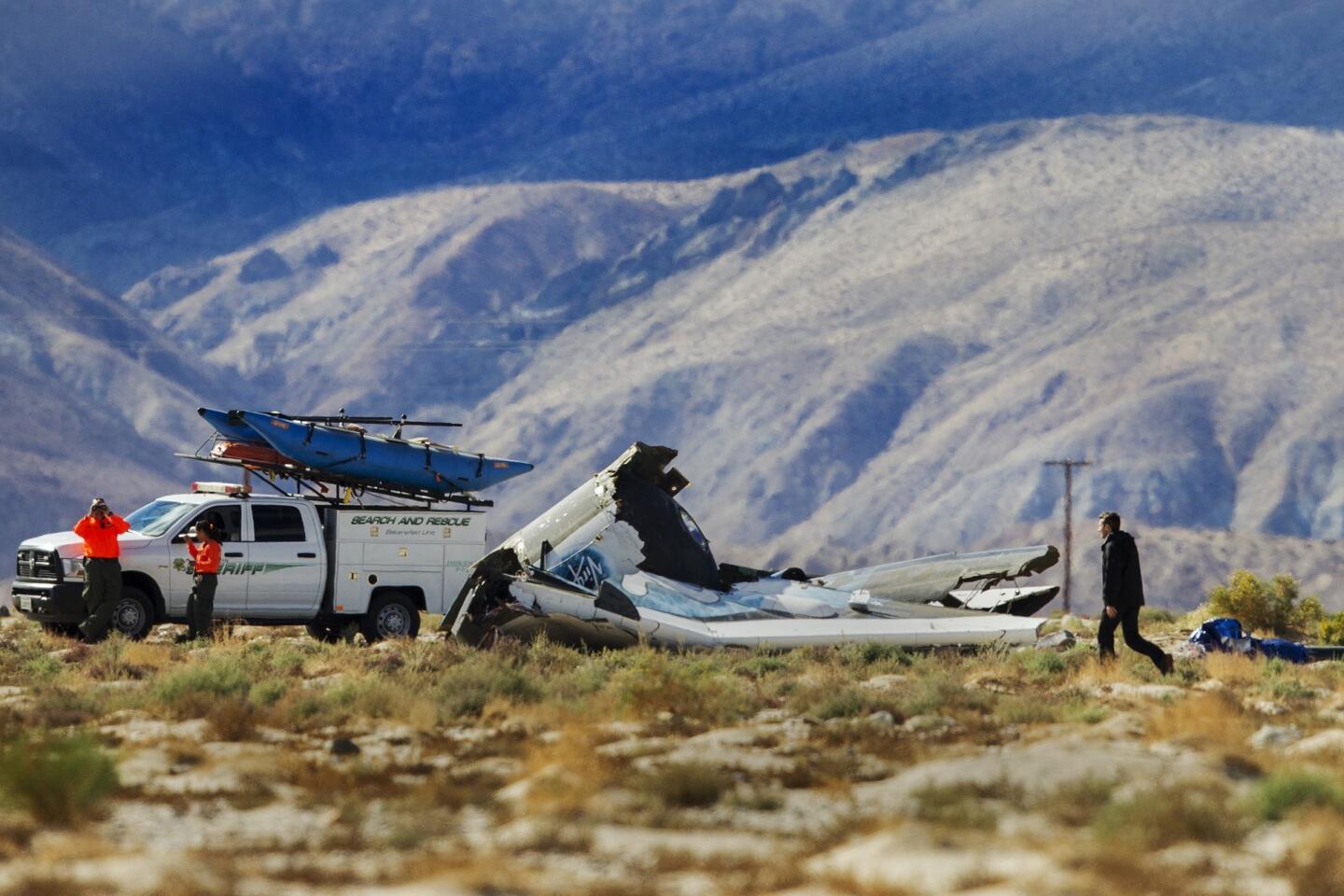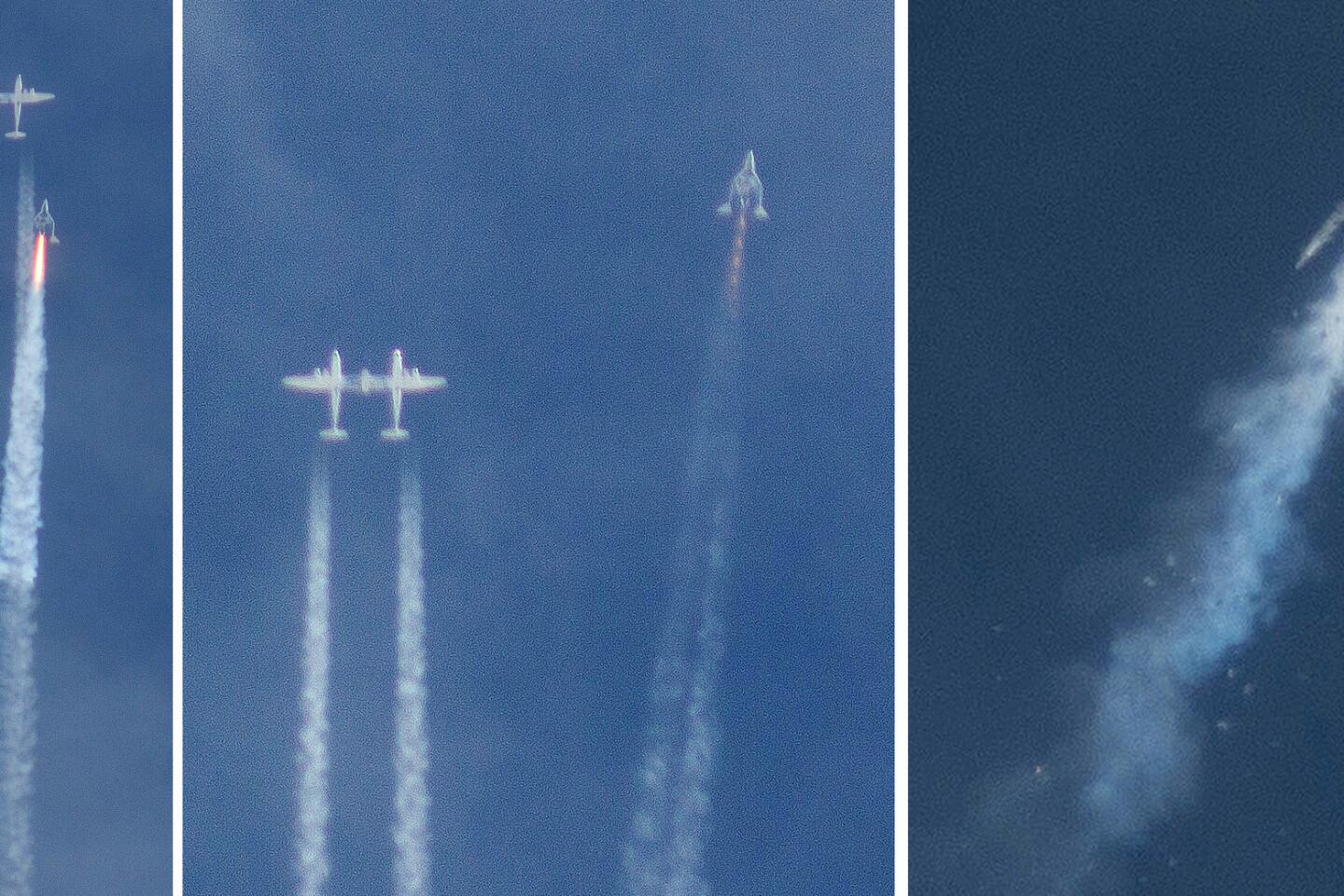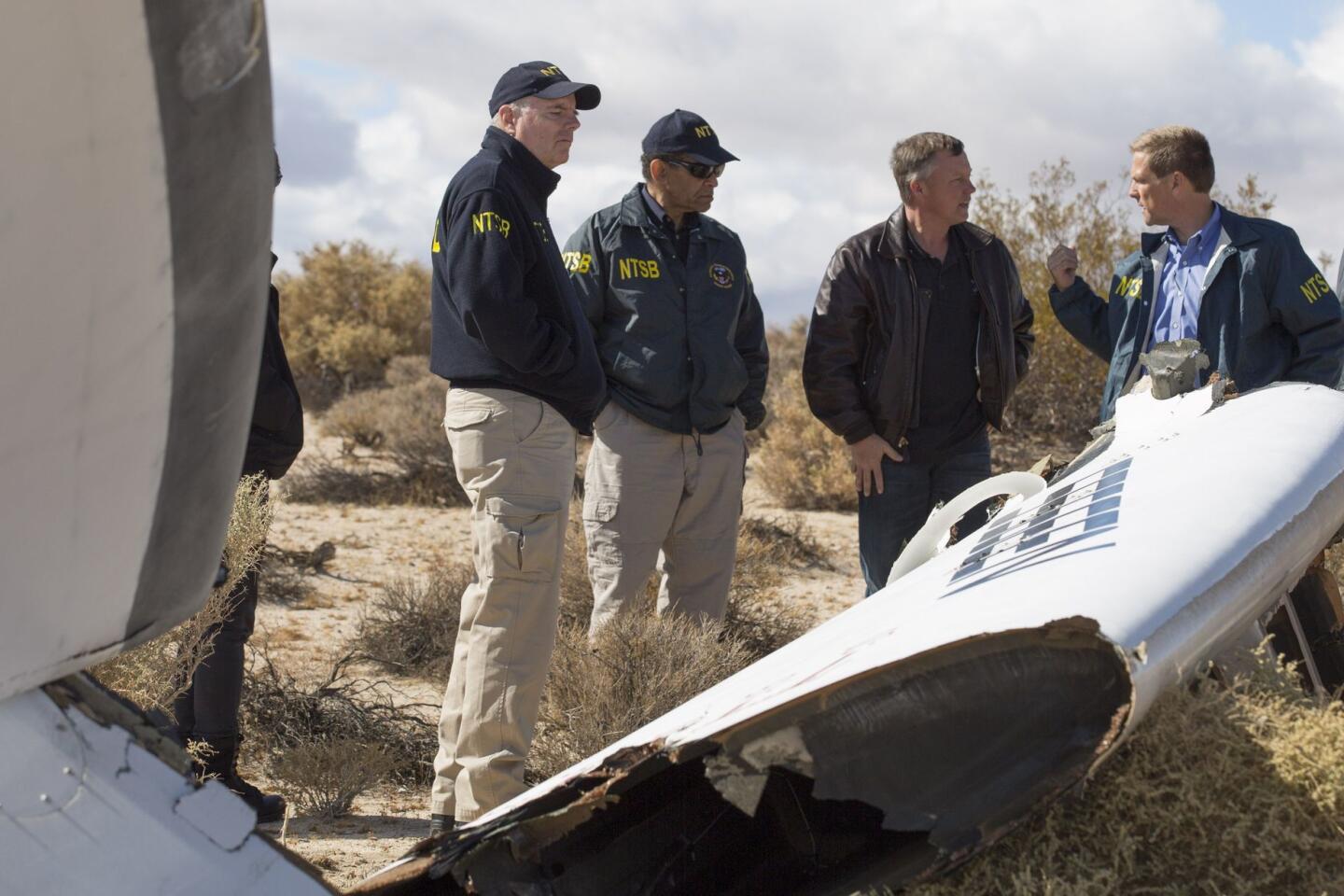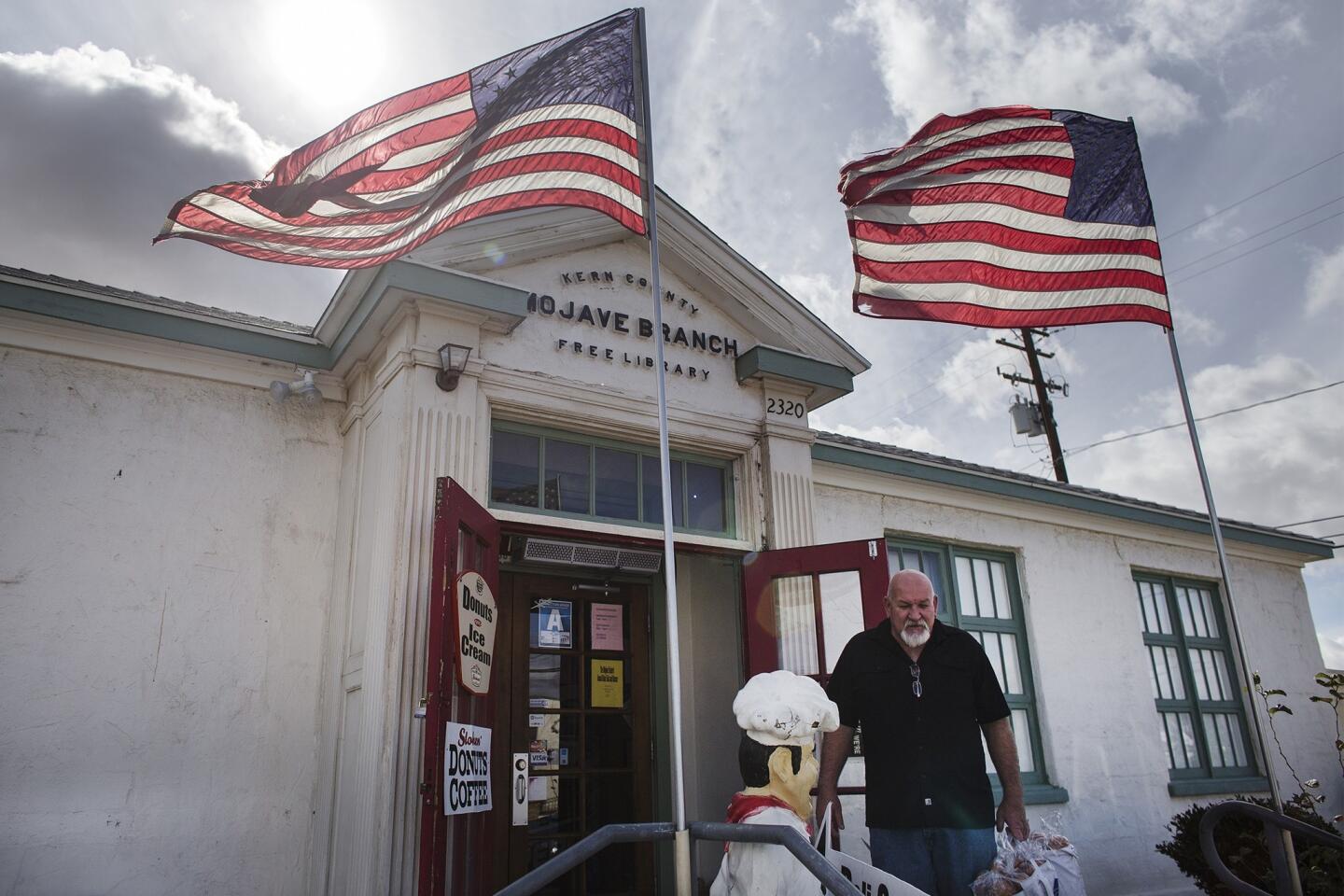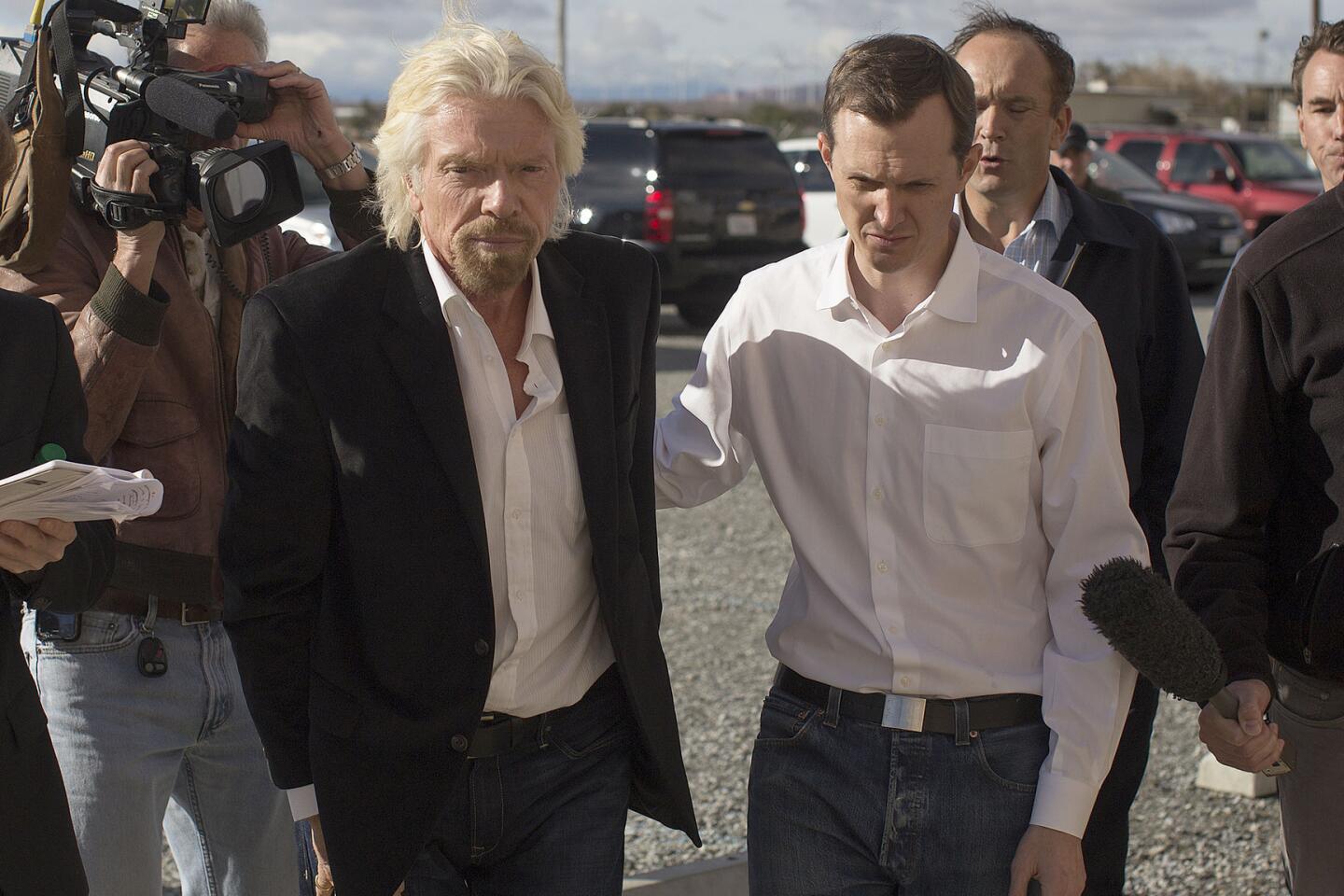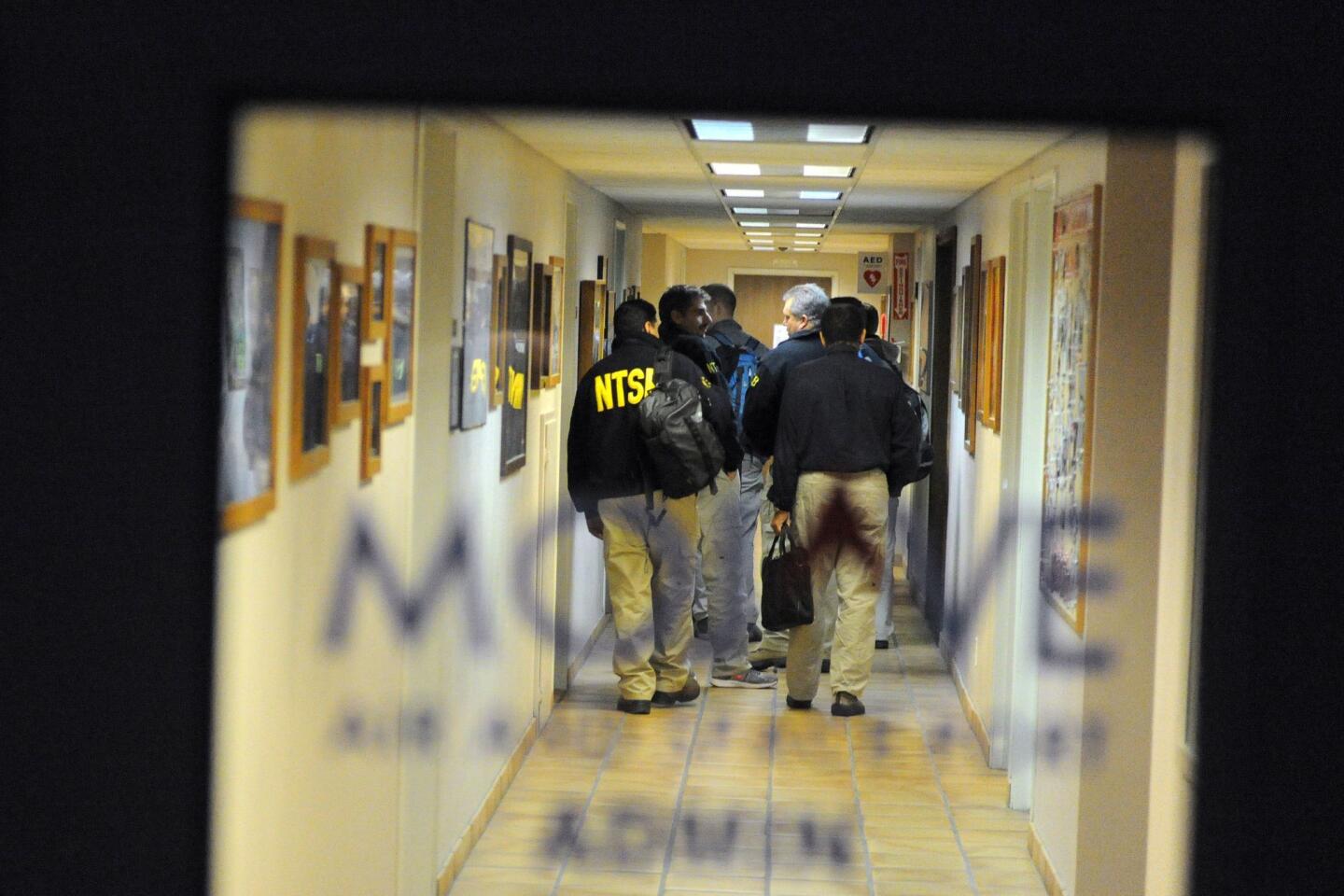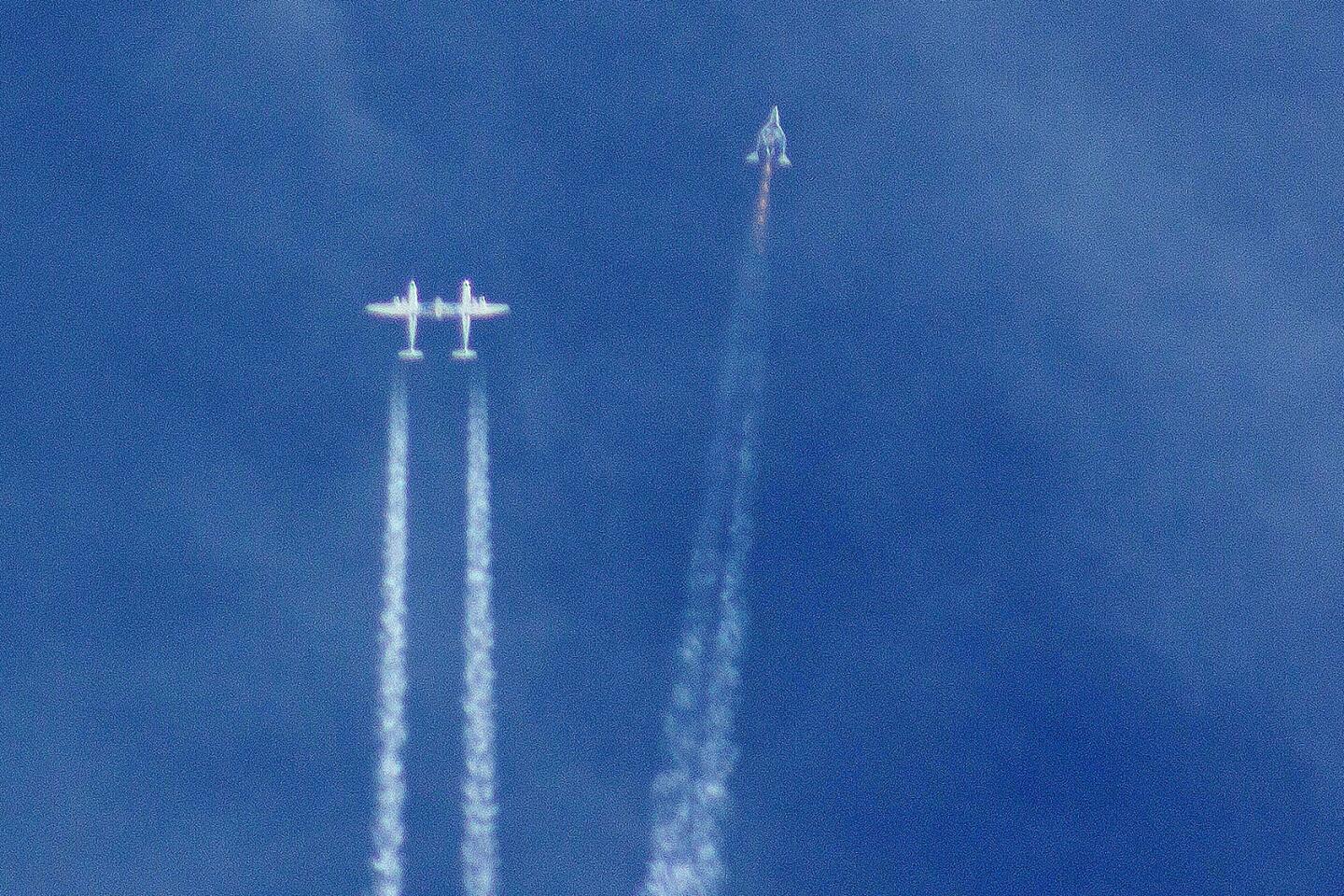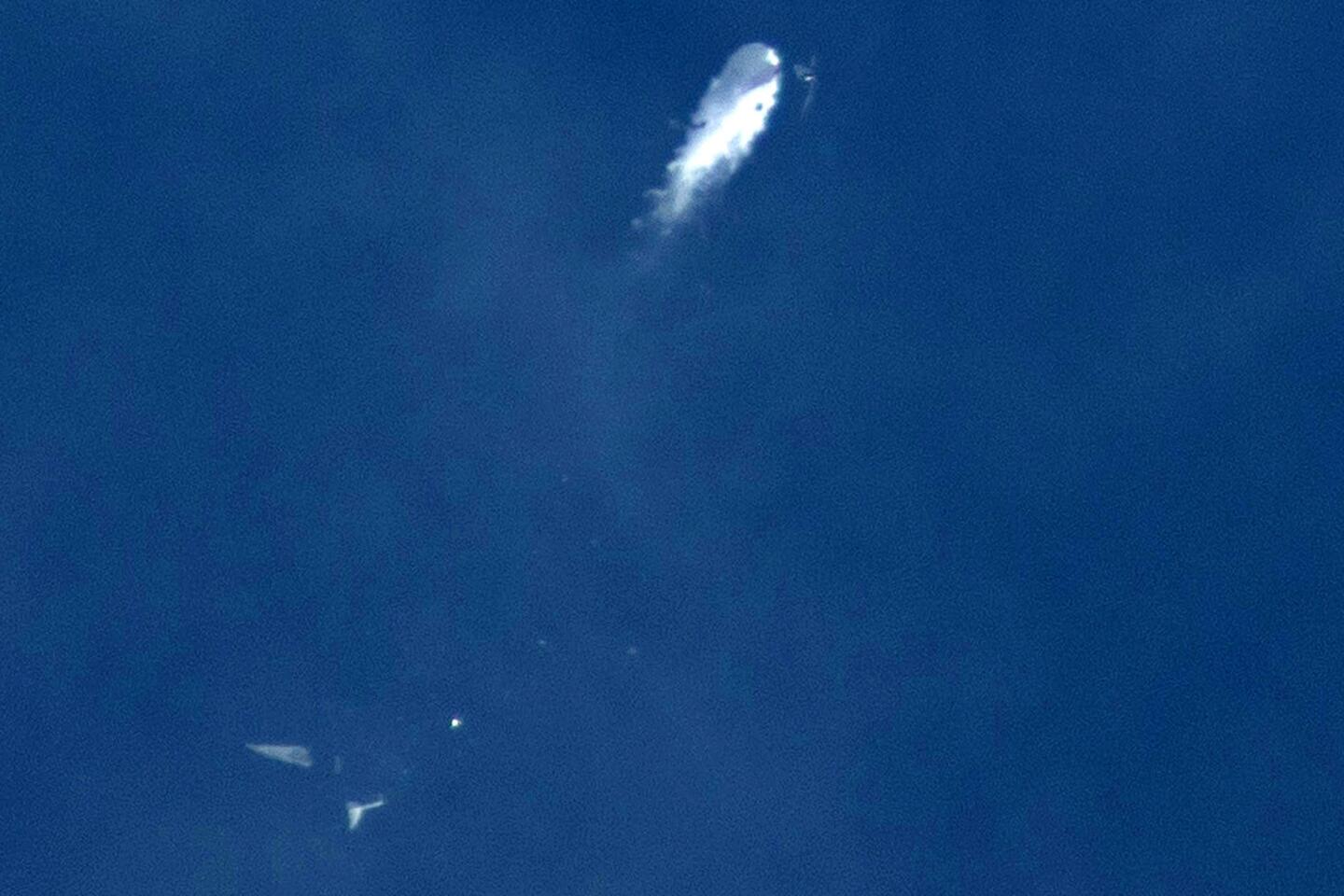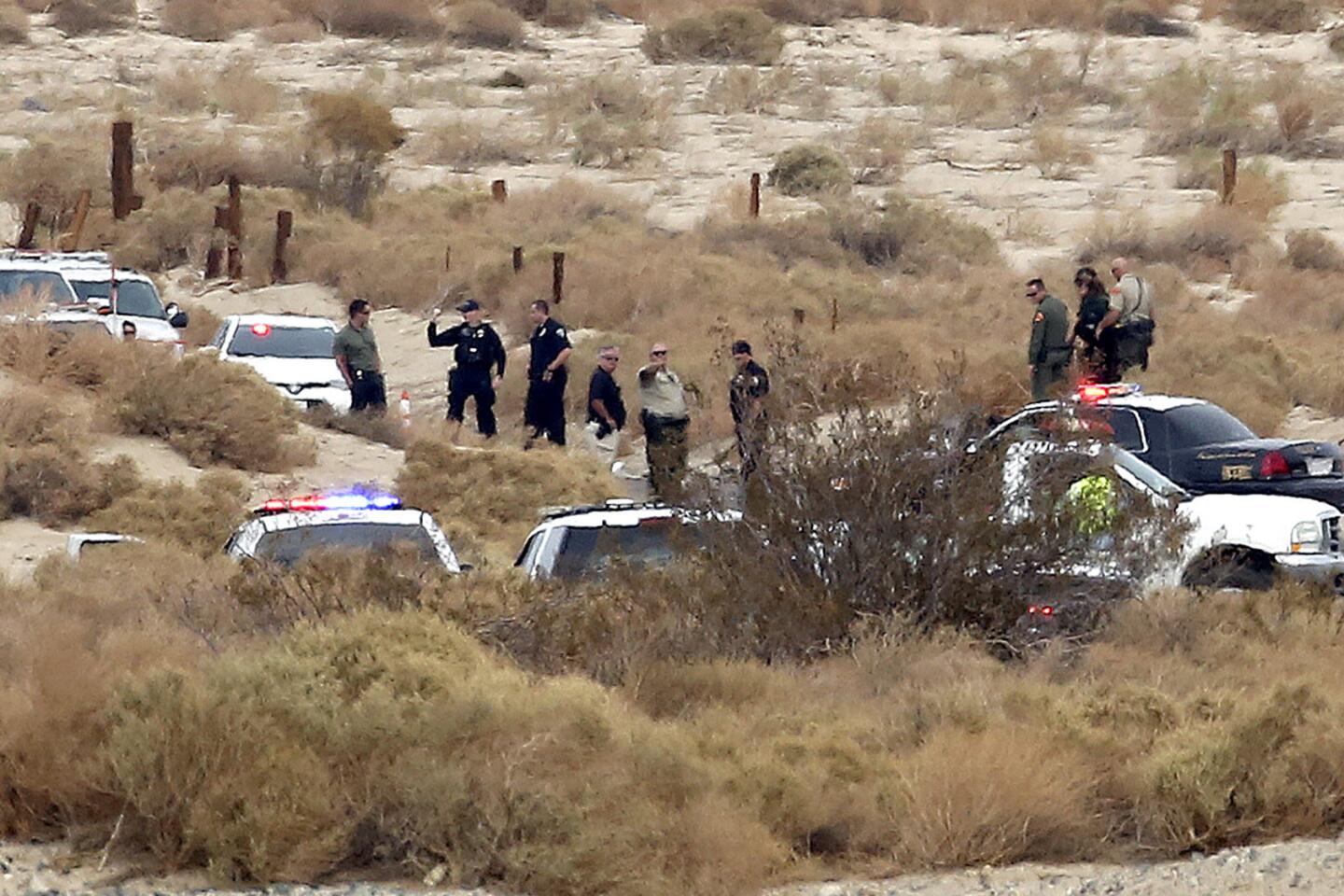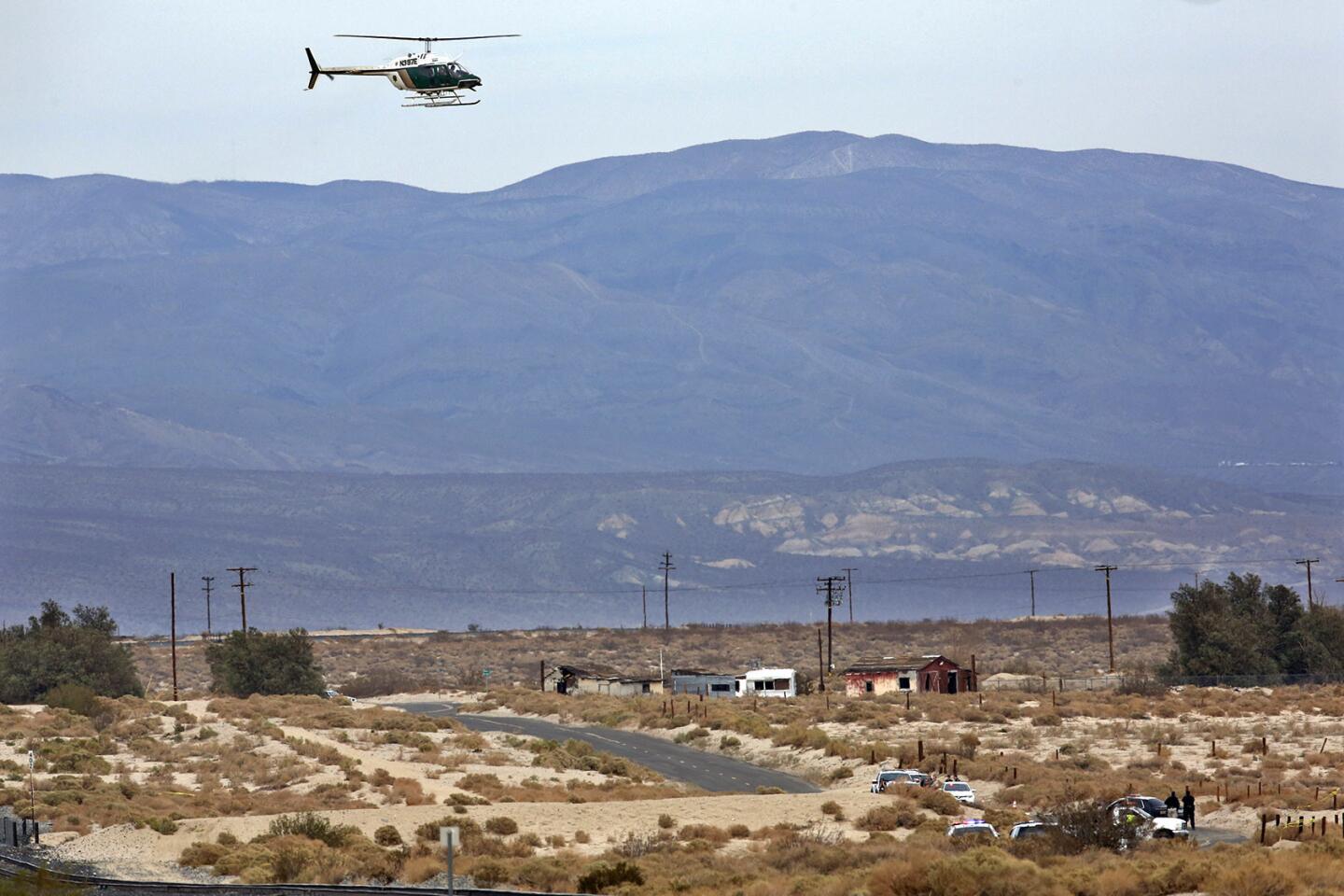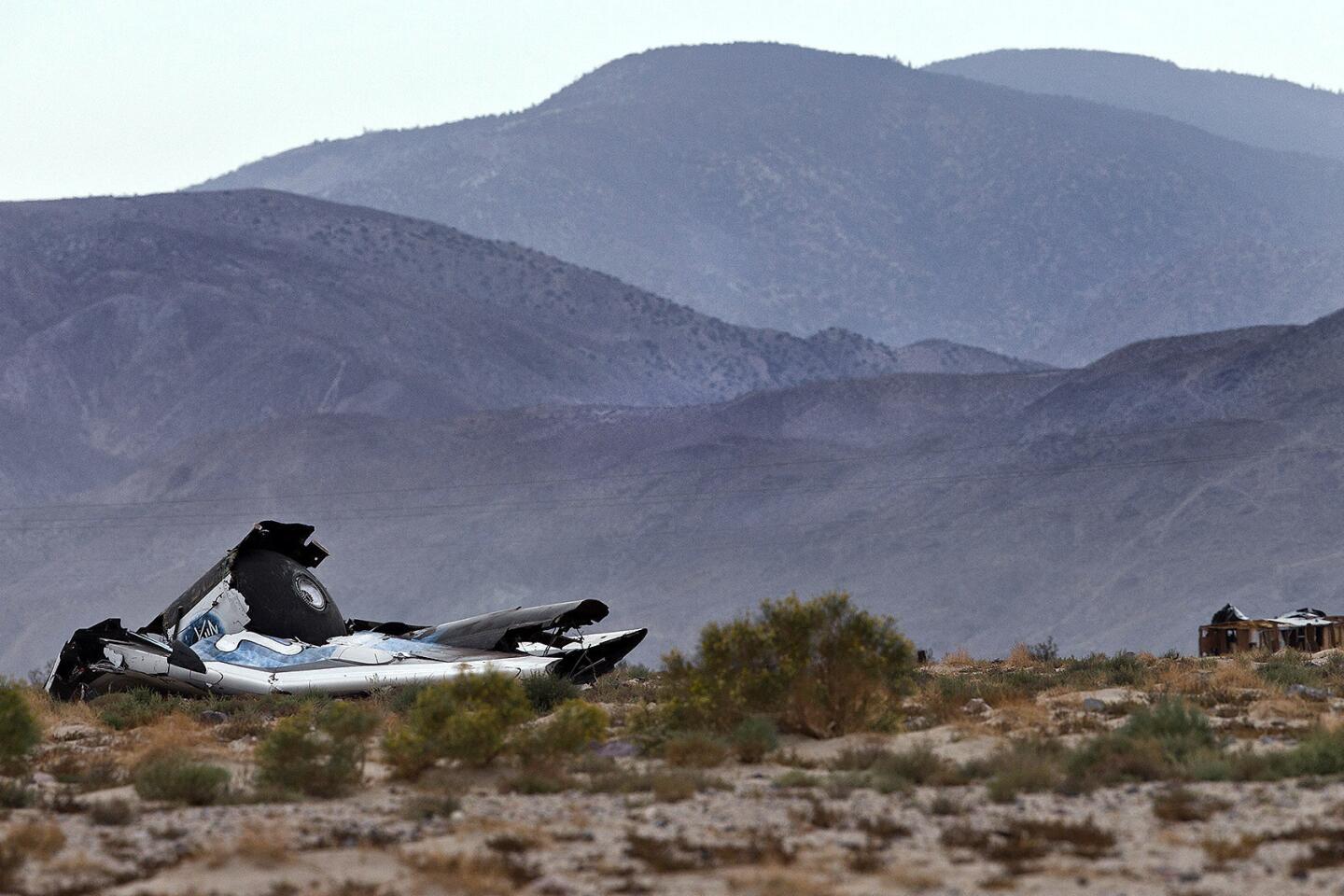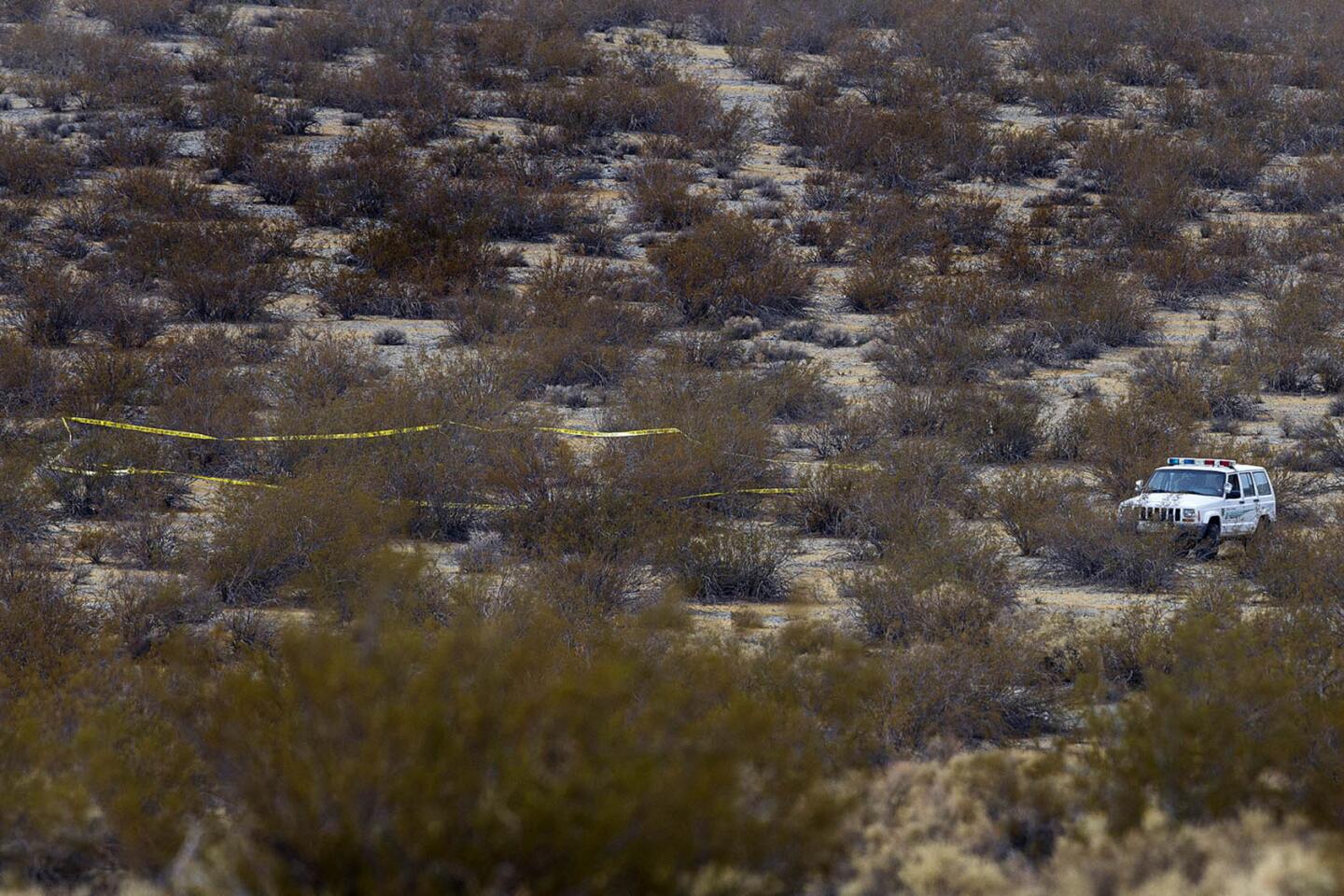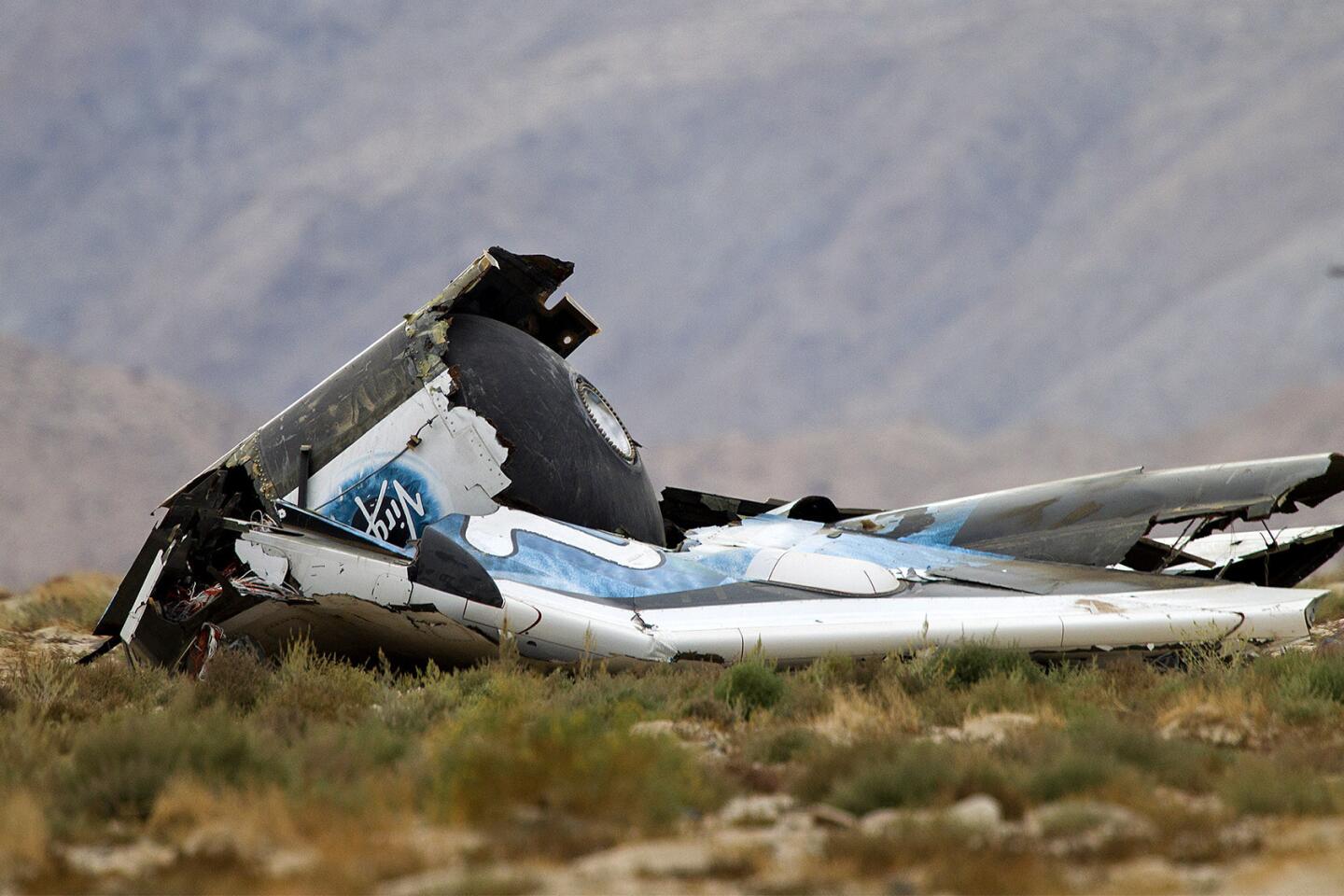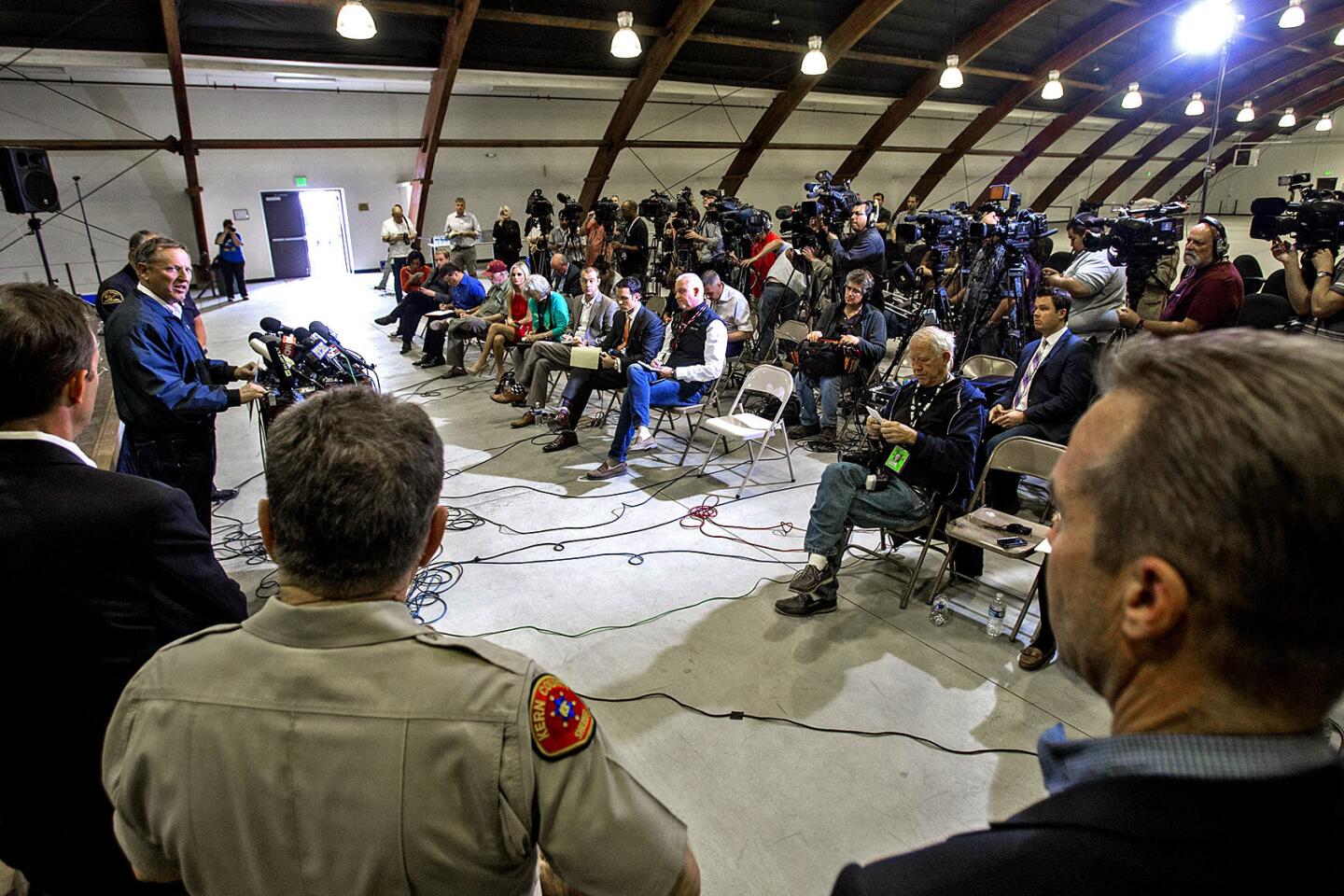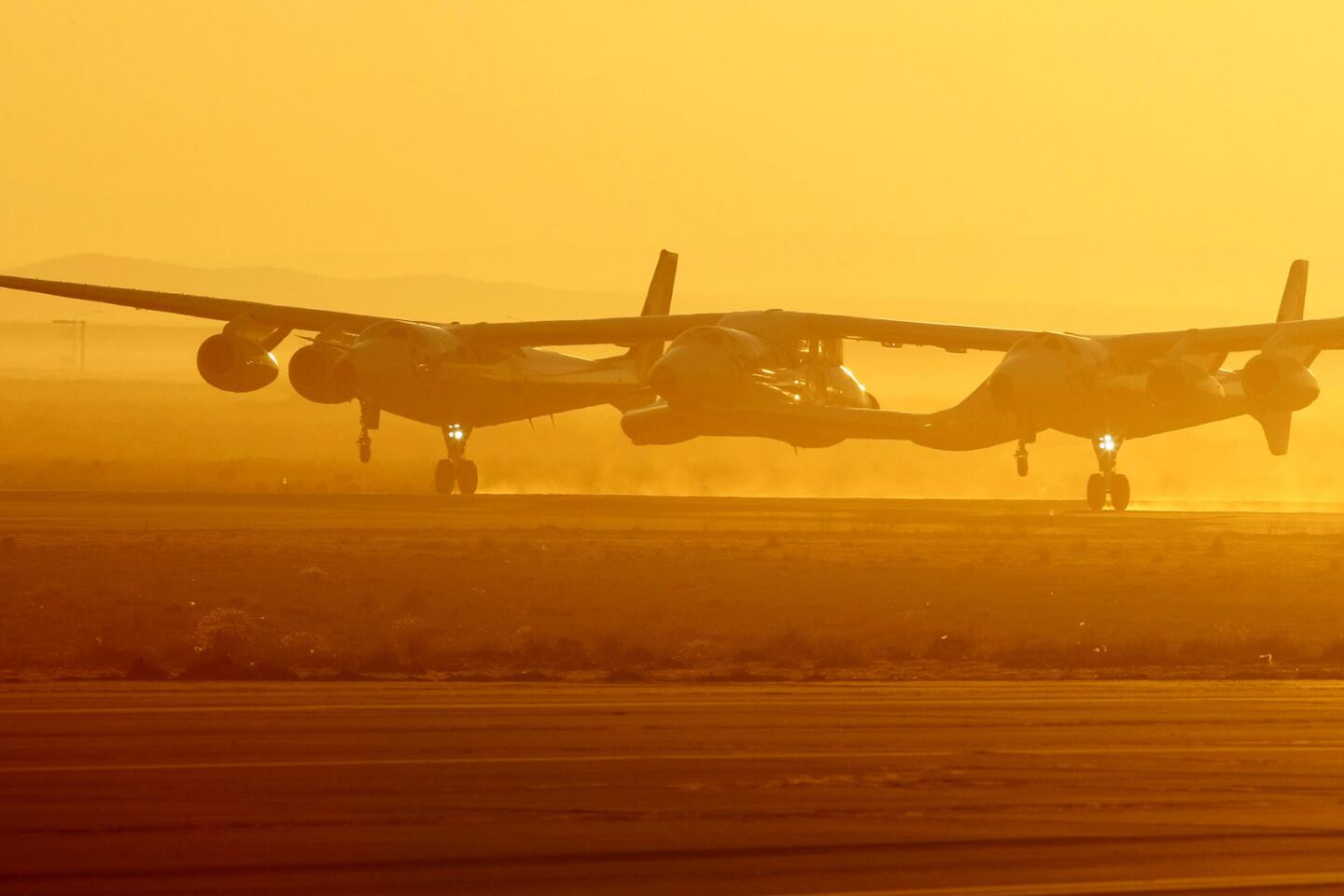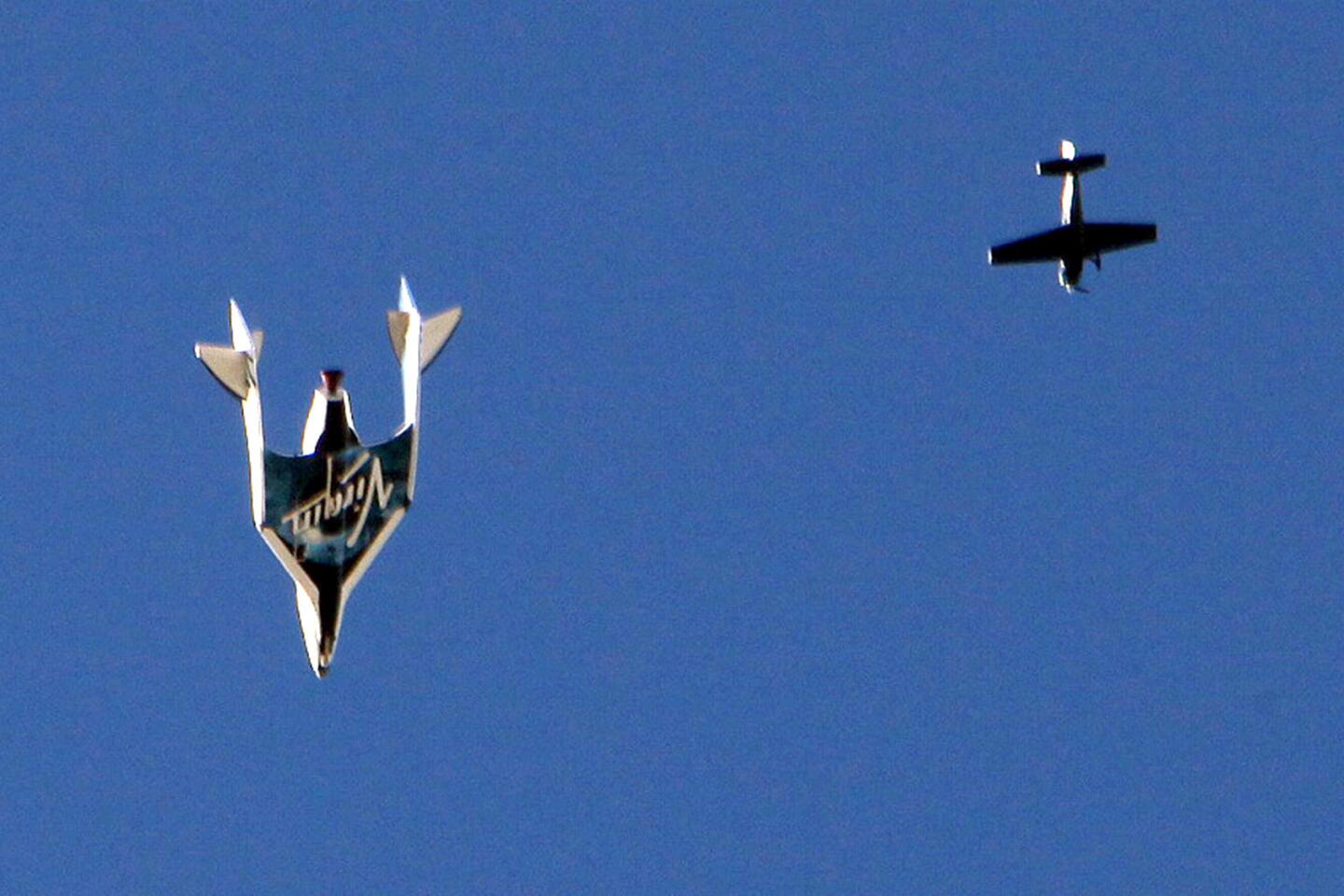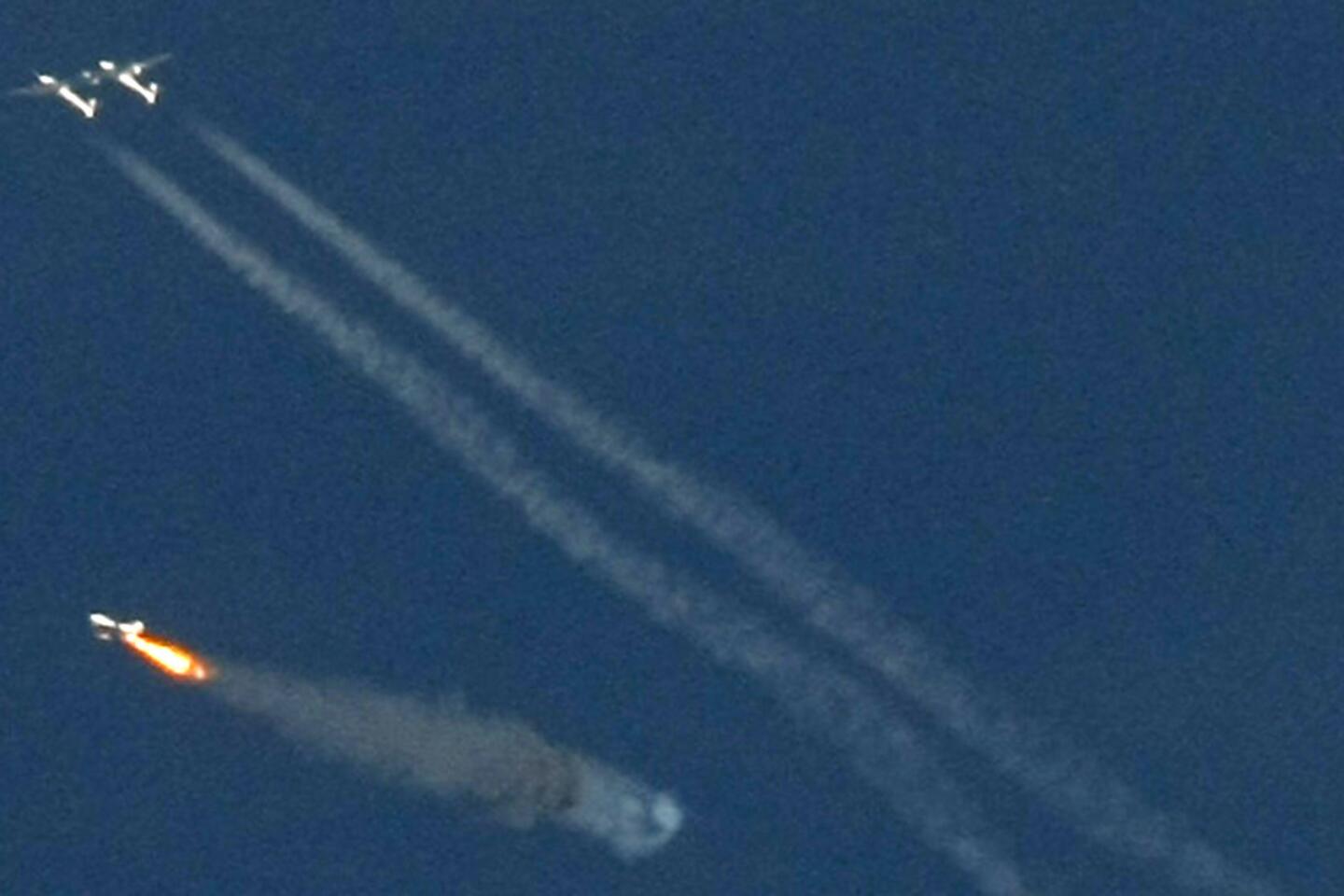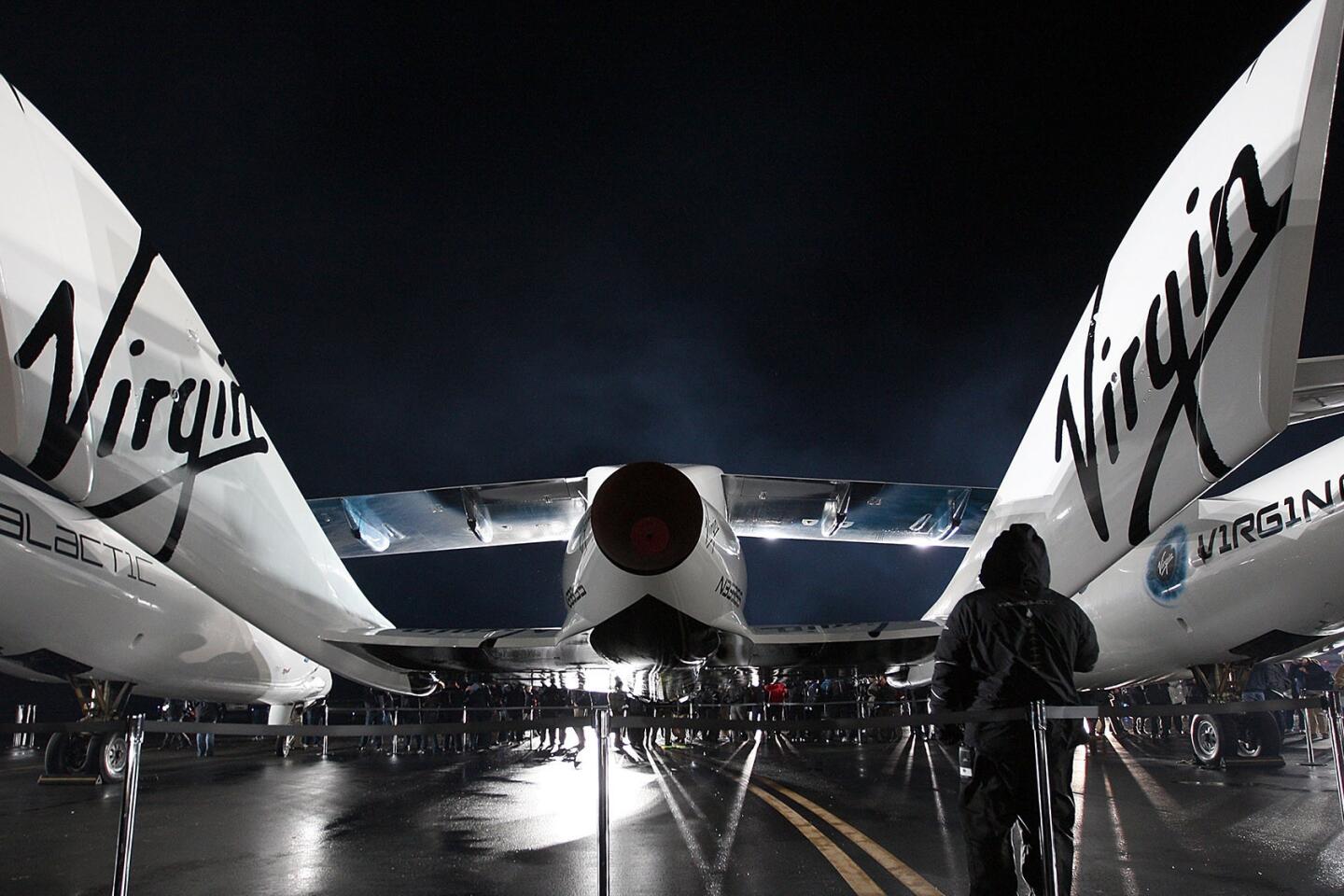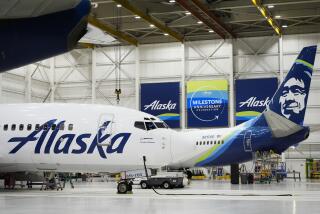‘Pilot error’ may have contributed to SpaceShipTwo’s crash, NTSB says
Just before SpaceShipTwo broke apart in midair Friday, the tail lifted prematurely after the co-pilot changed the aerodynamic controls, the leader of the National Transportation Safety Board said Sunday night.
Two levers were supposed to be pulled when the spacecraft reached Mach 1.4, allowing an action called “feathering” -- which lifts the tail to slow descent and create drag. Instead, a video in the cockpit and other data showed that one of the levers was unlocked early at Mach 1.0, NTSB Acting Chairman Christopher Hart told reporters.
About two seconds later, the tail moved into the extended position, even though a second “feather” handle was not moved, Hart said.
“Pilot error is a possibility,” Hart said. “We’re a long way from finding cause.”
The investigation into the fatal crash in the desert about 20 miles northeast of Mojave is to continue Monday, and he has said a final report could take as long as year.
NTSB investigators found the plane’s fuel tanks, oxidizer tanks and engine Sunday among the wreckage, Hart said. All those parts were intact, with no signs of having burned through or of being breached, he said.
Also on Sunday, Virgin Galactic’s chief executive said the company was planning to finish work on a second rocket plane by year’s end.
“The second spaceship is very advanced in its construction,” George Whitesides said. “We need to work closely with the NTSB … to work out as rapidly as we can what happened, and then to move forward. We’re hopeful we can make rapid progress.”
Friday’s test flight of SpaceShipTwo was the first time it was to fly by firing a new rocket motor using a plastic-based fuel – leading to speculation that the engine may have been a factor in the crash.
Until May, SpaceShipTwo had used a different motor that burned a rubber-based fuel.
Whitesides said he couldn’t talk about the accident during the investigation. When asked if the company would continue testing the new engine on the ground, he said, “I think the short answer is ‘yes.’”
The engine had passed ground tests before Friday’s flight that satisfied engineers who determined it was “qualified” to be tested in flight. That process, he said, involved “a small number of firings in a row to make sure you get the same result.”
“We have qualified the engine that we were putting into flight tests,” he said. “I’m sure that we will continue that work.”
He added, “As we’ve always said, we expect to continue to improve all our systems as time goes on just like any manufacturer would.”
In a statement released Sunday, Virgin Galactic said “no one wants to know more than we do” what happened on Friday.
“We are dedicated to opening the space frontier, while keeping safety as our ‘North Star,’” the statement said. “This has guided every decision we have made over the past decade, and any suggestion to the contrary is categorically untrue. ... Everything we do is to pursue the vision of accessible and democratized space – and to do it safely.”
Whiteside said Virgin Galactic had spent $500 million so far in its quest to fly tourists into space. The company had insurance, he said, that would help cover the cost of Friday’s crash.
Test pilot Michael Alsbury, 39, died in the crash. His body was found near the fuselage of the main wreckage, authorities said.
Surviving pilot Peter Siebold, 43, suffered a shoulder injury and was “alert and talking with his family and doctors” on Saturday, according to Scaled Composites, the company that designed SpaceShipTwo.
Times staff writer Petersen reported from Mojave and Raab from Los Angeles.
Follow @MelodyPetersen and @raablauren on Twitter
